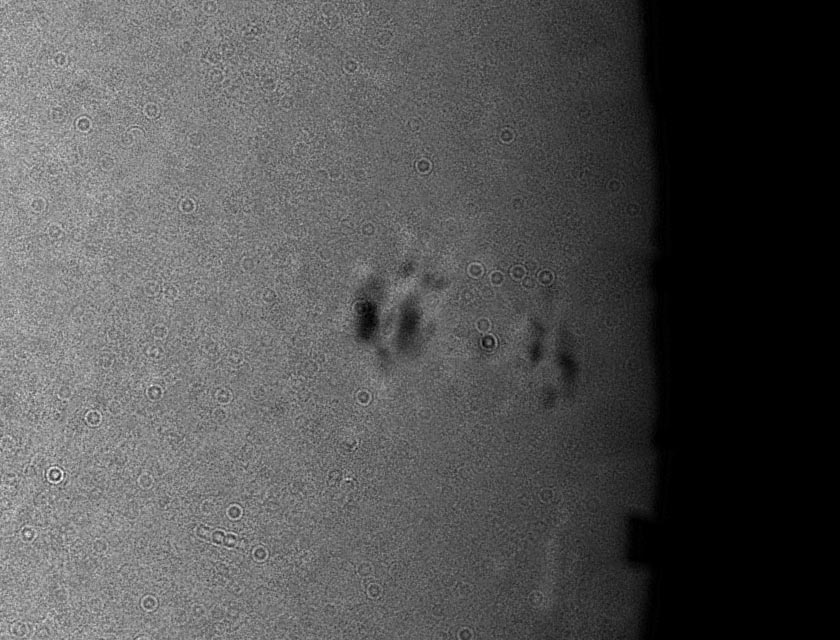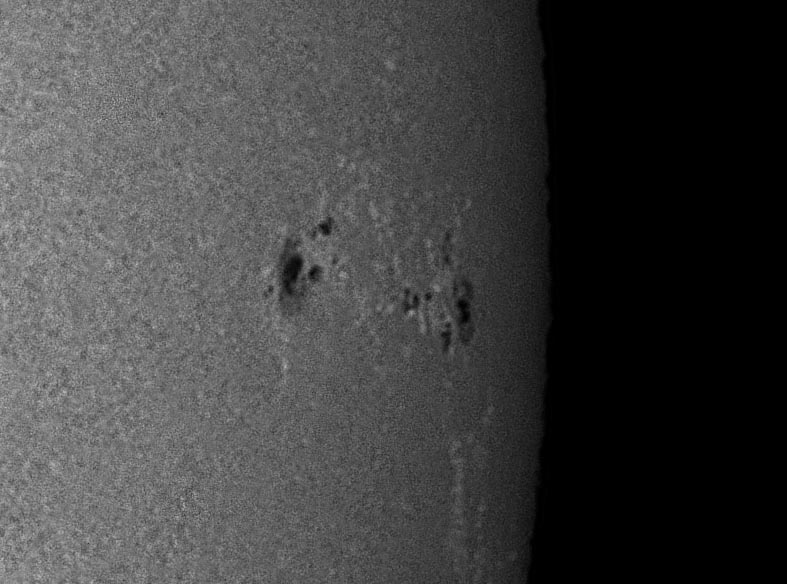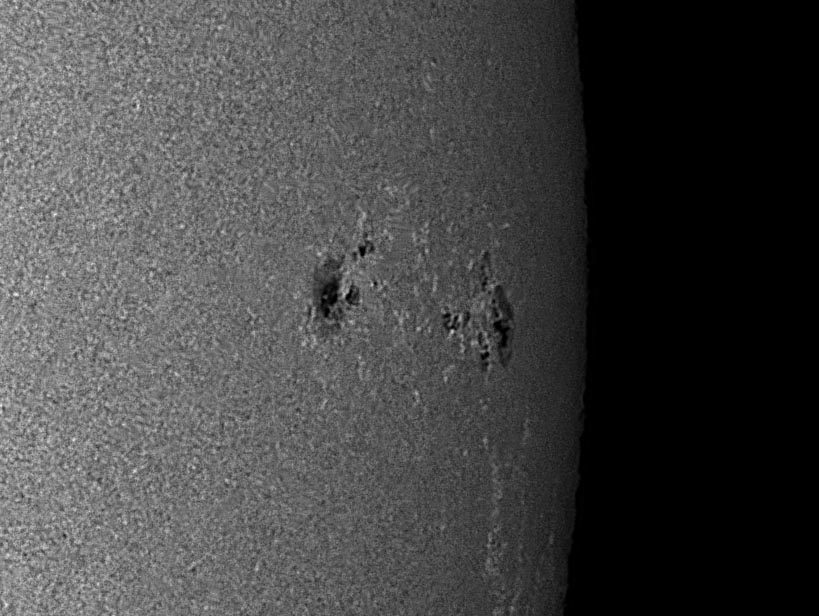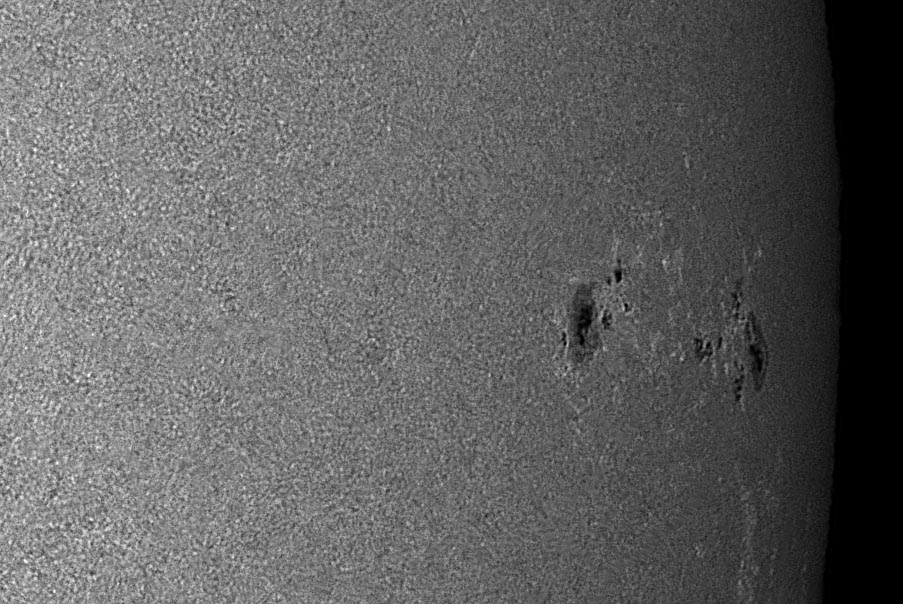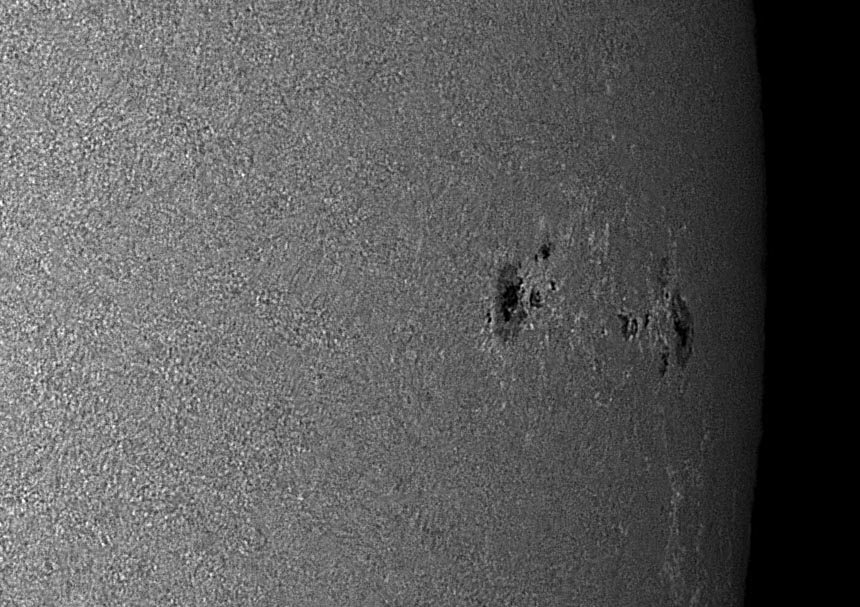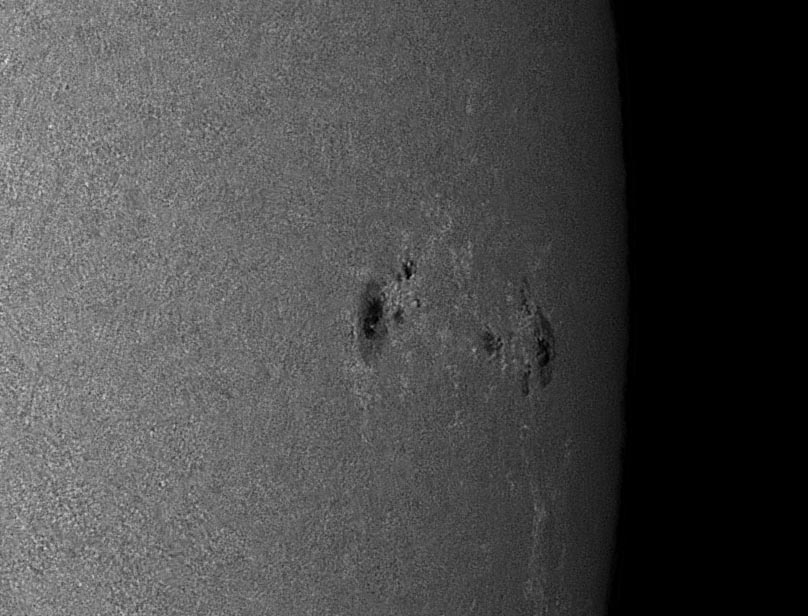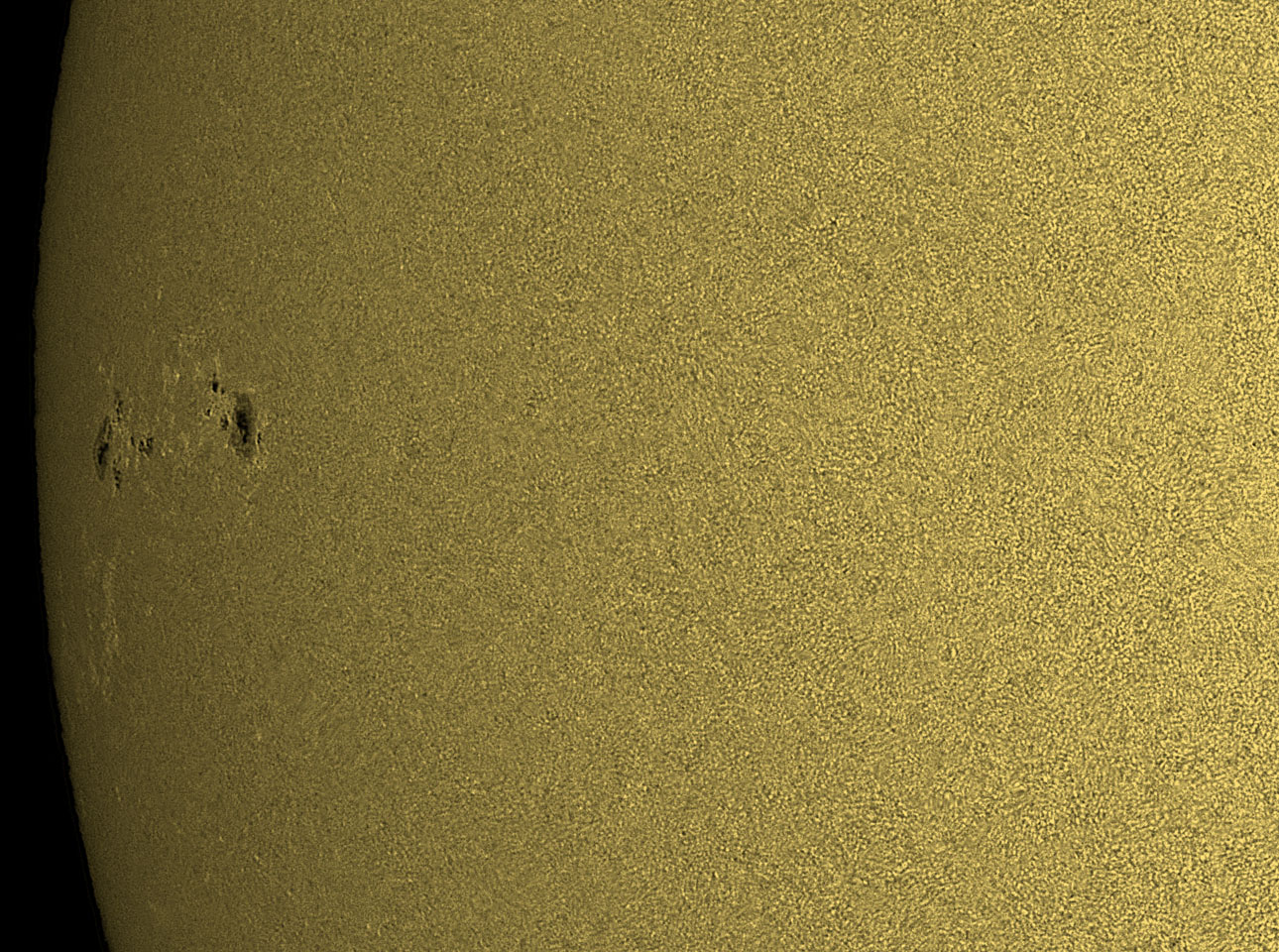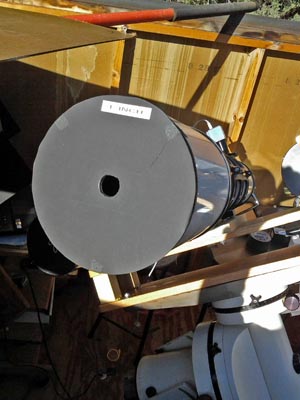
|
|
Introduction Most of the time, solar imagers are faced with less than optimal seeing and must back off on the magnification of the projected image on to the CCD/CMOS sensor. When the seeing is really bad, most of the time we are shooting only a full disk shot, or not at all. To help improve the odds of getting the best image possible on any given seeing situation, we constructed a series of aperture stops made from foam board, with hole sizes ranging from one inch to 5 inches, and of course - full aperture with no stop is six inches. On a clear Saturday morning the seeing was very poor - 1/5 where 1 is very bad and 5 is perfectly still, we tested the stops with the 2.5x Televue Powermate Barlow to determine the effect it would have on the highly magnified images. If the seeing was perfect, one would expect that as the aperture is increased, the resolution will go up, and the sharpest image would be with the six inch full aperture. However if the seeing is poor, the seeing cells in the upper atmosphere would determine the optimal size of the aperture for sharpest image. In practice, this is what occurred and on this mornings 1/5 seeing, the four inch size was the sharpest. For this test, the brightness was adjusted after the stop was installed to yield the identical histogram when the original AVI files were recorded. Below is the images from this test. They are cropped to half frame size so you can see the effects more clearly, all images were automatically processed in AVIStack, and the exact same amount of wavelet processing was performed on each in Registax. In Photoshop, the brightness of each image was made similar and rescaled to the posting size here.
Finally, here is the overall sharpest image with the 4 inch aperture after normal finishing processing in Photoshop: Six inch AR152 Explore Scientific Refractor, DMK51 CCD camera, Payson Arizona
Conclusions From what I can tell, it would be prudent to have available as standard equipment a set of stops ranging from half the aperture upwards such that when poor seeing presents itself, you are able to better deal with it and shoot the sharpest images possible for that date. They are inexpensive to make, and can simply be taped over the front of the dew cap when needed! Final image - I found it quite humorous to see the six inch stopped down to a one inch aperture:
|
